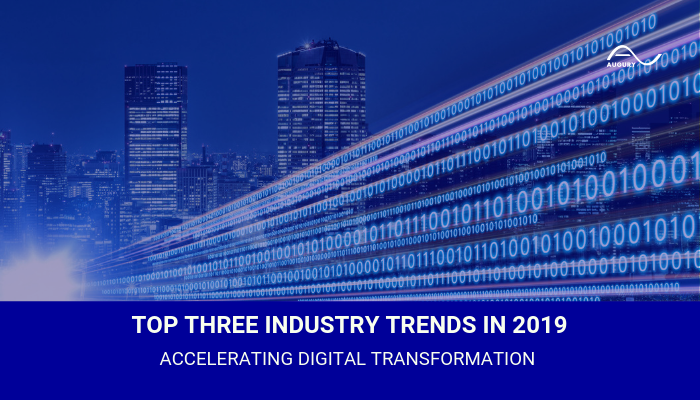The manufacturer had an important decision to make, and they needed to make it fast.
They could either continue their decentralized strategy and allow sites to evaluate and determine what technologies, in this case an ERP system, they would use in their operations—or they could attempt a full-scale standardization initiative for their operations, centralized around a single ERP vendor. The centralized approach would ensure every facility would work around a core technology that would connect seamlessly into corporate dashboards and provide visibility on an enterprise level. They chose the centralized, single-vendor approach.
It took them seven years…
As the market transitions from a state of uncertainty around Industry 4.0 digital transformation trends, into a state of rapid implementation and scaling, it’s important to remember the lessons of the past. We’ve seen this play out before with ERP systems and other industrial technologies that are prevalent today. Change-management and corporate-wide implementations of new technologies are not new—it’s more of the same, but we have more experience now.
The industrial leaders that we work with are going into the fourth industrial revolution with their eyes wide open and are taking a measured and thoughtful approach toward innovation and current digital transformation trends.
The following are a few of the trends that we’ve seen accelerating the pace, and success rate, of digital transformation and machine health initiatives mid-2019.
A Measured and Thoughtful Approach
The corporate view on digitization initiatives has gone from interesting science projects to programs that deliver clear ROI, fast.
The key to increasing the ROI of these programs, and getting a leg up on your competition, is scaling aggressively. This has transitioned early conversations from being focused on smaller rollouts to prove the validity of the technology, into partnership consultations—regarding supply chain digitization strategies and the roadmap to company-wide implementation.
As a result, senior leadership teams and decision-makers are coming to the table with a much clearer process for how they want to drive innovation and scale across hundreds of facilities—and they require alignment on that vision from their partners and vendors. This creates stronger and more impactful partnerships because it means we’re able to create clear plans together, from the start.
Increased Centralization
Another trend we’re seeing across the board is an increased convergence between Information Technology(IT) and Operational Technology(OT). As more and more plant and operational data becomes available on the cloud, IT experts are becoming more involved in OT conversations. The main concerns of the IT experts are to understand what’s being done with the data on the physical side and how that data is being protected.
This integration means greater centralization of technology selection within organizations. As recently as 2017, we saw individual plants selecting vendors and deciding on their approaches to machine health. But now, IT departments are getting more involved—they want to see the bigger picture and take an enterprise-wide approach so that all corporate stakeholders can access the data they need securely and efficiently. These decision-makers want to realize the full value of digitally transforming their facilities. In order to make this a reality, corporate stakeholders need all of their systems and information from individual facilities to roll-up to a centralized corporate dashboard to aid them in strategic decision making.
While a decentralized approach may allow for quicker and more customized deployment on a facility level, it takes longer to achieve and realize the benefits across the whole organization. But as organizations see increasing value from digitization, it makes sense to become centralized from the start—or potentially pay the price of seven years of cleanup.
Starting with Machine Health
Depending on the company, industrial digitization may have different goals including just-in-time manufacturing, lights-out facilities or even new business model creation. What we’ve found is that wherever you’re aiming, digitizing machine health is the best place to start.
Digital machine health minimizes downtime by preventing mechanical failures and ensures production goals are met—which has a positive butterfly effect throughout the entire supply chain. It also has the potential to re-invent how maintenance, operations and reliability teams work together.
Today, there’s a greater awareness that simply capturing data from your assets isn’t enough. The existing data alone isn’t necessarily valuable or of the proper quality to be useful in diagnosing machine health. As one example, knowing the pressure of a pump alone doesn’t help with assessing bearing wear. You need to combine this operational data with a range of mechanical data, such as vibration, temperature, magnetic field data and analyze them together to get the full picture. Ideally, all mechanical data is consistently recorded and centrally gathered, instead of harvested piecemeal from a multitude of proprietary OEMs.
The industry has matured to a point where machine health and digitization have clear, immediate, big-picture benefits. The door is open wider than ever for the future of digital transformation and real results.
As we move into the second half of 2019 and IIoT adoption continues to accelerate, we expect more measured and thoughtful approaches to centralize technology implementation focusing on machine health, first.
Learn more about machine health here.






